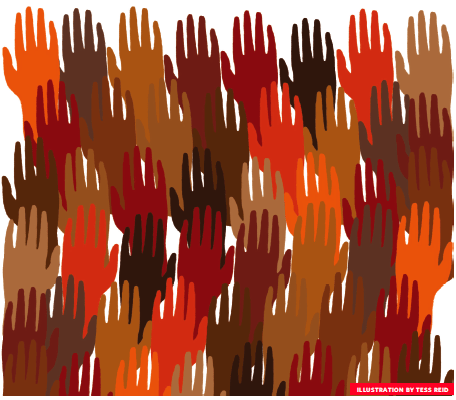I was recently having a conversation with a friend of mine, who is also a young black woman, and we were chatting and joking about the most ridiculous ways that we’ve been approached by males and asked out on dates.
We were laughing until she remarked that in one instance, a punk whose poor attempt to flatter her backfired wildly as he said, “You’re pretty for a dark-skinned girl.”
To say that his comment was a backhanded compliment is a vast understatement. To add insult to injury, this came from a black male, proving how deeply ingrained colourism is and how ignorant it makes us look as a race.
So often, we hear people calling others “racist,” but we never hear people calling each other “colourists.” Colourism is a global, culturally widespread issue with minimal dialogue, so for those who are not aware of this term, here’s the definition.
Colourism refers to the prejudices people face within their own race based on skin tone. for instance, an incident of colourism may depict a black person with a darker skin tone discriminating against a black person with a lighter skin tone.
There is no doubt that historically, “light skins” have had privilege in our society, typically deemed more desirable and even smarter than their darker skinned counterparts.
As our conversation morphed from a jovial chat that was full of anecdotes to a serious discussion, my friend asked, “How are we going to discriminate against our own skin tone when we come in so many different shades?”
She was obviously right to ask the rhetorical question, but it made me think—why do we discriminate against each other after we’ve been discriminated against by others as a whole race for so long? It’s a demoralizing question, but once upon a time, the others were successful in dividing us—the others—from each other, and it continues on today.
Colourism is certainly not just an issue among blacks, though. The more I researched this subdivision of racism, the more I realized that it is a pervasive issue because I recognized the same issues come up amongst black people that other people of colour face as well.
Colourism is highly prevalent among Indian, Asian, South American and even some European cultures because as previously stated, it is an expression of internalized racism that is so deeply ingrained in our beings, much of the time so much so that we don’t even realize it.
I asked another friend of mine who has a Vietnamese background if she has ever experienced or witnessed colourism, and, not surprisingly, she had.
She recalls, “Growing up, I often played outside with my brother, especially during the summer. As a result, we’d get really, really tan. At family gatherings, all the adults would tease us about being ‘so dark.’
This childhood recollection is proof that this form of discrimination exists not just among black communities, but in others as well. In any case, as there is no denying that colourism exists and is an issue in our society, there is also no denying that this is an issue that can be absolved with more of an honest, open dialogue amongst ourselves.
Acknowledging colourism on a whole is significant, whether you have been a victim of it or an involuntary participant in spreading its perceived notions, but it is imperative that we actually take the steps to break down the stereotypes involved.
We can’t afford to let ignorance and a concept born out of hatred continue to thrive in the minds of our society. It’s time to stop being a colourist.
Salem Tesfai
Contributor



